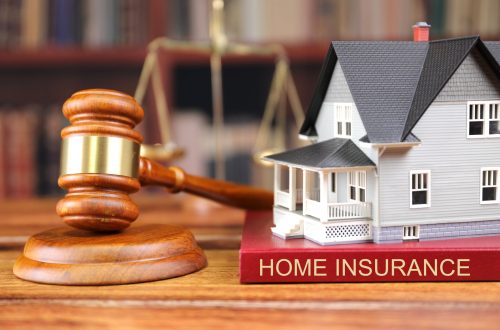It can be difficult to deal with the aftereffects of a strong wind in a tree-lined neighbourhood. Imagine your shock when an oak tree smashes through the middle of your home, resulting in the expensive process of demolish and rebuild. Your insurance might cover the cost of wind damage but it may not be enough to pay for the costs to tear down and rebuild your house.
The clause that covers building codes or ordinances in your homeowner’s policy is an important consideration. The clause in your homeowners’ policy can have a significant impact on the coverage you receive for demolish-and-rebuild costs. The windstorm may have caused damage to your house, but the costs associated with upgrading it to meet current codes are not usually covered.
What will this do for you? Unexpectedly high out-of pocket costs.
If your policy excludes or limits coverage for building laws or ordinances, even a large tree may prevent you from being covered. You can protect your budget by getting additional insurance to cover the costs of tearing down and rebuilding your house.

There are different types of building ordinances or laws that cover construction.
A homeowners policy’s main goal is to restore your home to its original condition. The building ordinance/law endorsement will extend your homeowners insurance coverage to parts of your house that were not damaged by the covered peril but need to be upgraded or repaired in order for them meet a local building code.
Take a look at these endorsements for building ordinances or laws:
Undamaged Coverage of the Portion
Say the insurer has assessed that the damage caused by the oak is 70%. The insurance company will cover the cost of repairing any damage caused by the oak tree. When you apply for a building permit, you are told that any structures beyond a 50% damage level must be rebuilt. Does it suffice?
The wording and overall coverage of your insurance policy will determine whether you are covered or not. Standard limits for building law or ordinance coverage are usually set at 10%. (This is typically defined as dwelling coverage A). You are quoted $60,000 by the contractor to replace your home’s undamaged portions. The 10% cap applies to $30,000. Your coverage will only cover $30,000 of the gap. You could close this gap by increasing your coverage to 20% instead of the usual 10%.
The Demolition Costs Coverage
You should not think that the home will tear itself apart and then clean it up. The cost of rebuilding the damaged part might be covered, but the costs to remove debris and demolish the parts that are not damaged may not. Will it cover all your expenses? It depends.
If required by law or building regulations, the demolition cost endorsement will cover the costs to remove debris from the unaffected portion of the structure and demolish it. You’re stuck with the standard 10% coverage of your homeowners policy for both demolishment and reconstruction if you don’t have any additional coverage endorsements. You may still have to pay some cleanup costs after the rebuilding cost of $60,000, even if your coverage increases from 10% to 20%.
Think of your worst case scenario for cleanup costs, such as labor and machinery. You can get a law or ordinance endorsement that covers 25% of the homeowners limits. This will give you $75,000 to cover your entire project. You’ll have an extra $15,000 to cover the demo.
Construction Costs Increased Coverage
You may still have to build your house to the code even if you are not forced to demolish and rebuild.
If, for example, only 35 percent of your home has structural damage, but an inspector from the city insists on electrical and plumbing improvements, then you may be faced with a $40,000. You would get $30,000 of your $300,000.00 policy with the 10% standard coverage. This leaves you $10,000 for yourself. Standard homeowners policies for the building law or ordinance allow for 10% coverage, but this doesn’t cover you completely. Increasing your coverage to 20% will provide you with better coverage against the costs of demolition and reconstruction.
Avoid a generic policy. To ensure that you are in compliance, familiarize yourself with the local codes and ordinances. You may need to adhere to special codes based on the zoning of your property. Subdivisions in a particular city might also have unique requirements. Also, ask about time restrictions on rebuilding projects. You may have to make a significant financial investment if your house is old and worth a lot.





